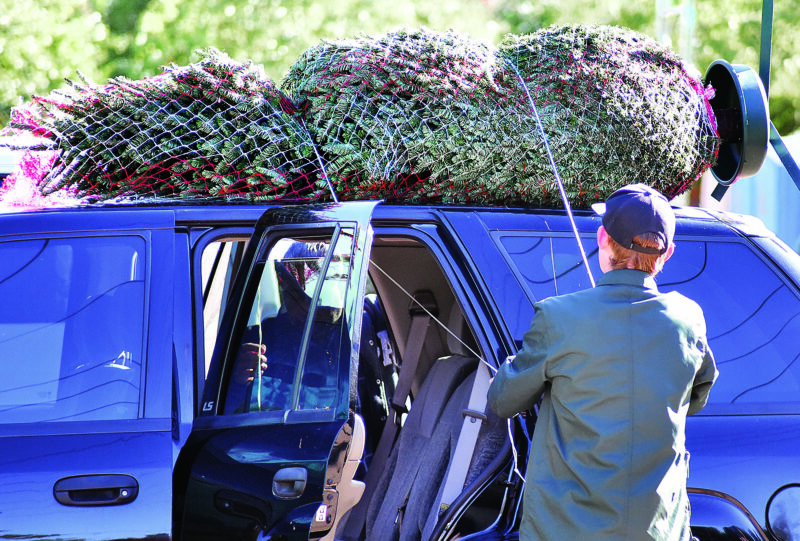The price of Christmas trees has spiked this holiday season amid the ongoing global supply chain disruption due to the pandemic, along with a record-breaking year of drought in the Pacific Northwest.
“In all the years I’ve been doing this — and I’ve been doing this a long time, (around) 26 years — I’ve never had to increase my tree prices as much as I did this year,” said Doug Bennett, owner of Bennett’s Best.
Frosty’s Forest owner Brent Green said the tree farm is down to only around 200 trees out of more than 2,500, when they would typically have closer to 1,000 trees at this time during a normal year.
“We’re probably going to be shut down by Saturday or Sunday because we’ll be sold out of trees…. so we’ll be closing a week, week and a half earlier than we normally do,” Green told The Signal Wednesday.

Bennett’s Best’s last truckload of trees arrived Wednesday, and Bennett said he hopes the supply will last until next weekend, though he expects his supply of larger trees will be gone by the end of this weekend.
These Santa Clarita tree farm owners say several factors have contributed to the cost increase that has resulted in lower inventory than usual at this time of year.
Tree farms such as these down in Southern California typically get their stock from Oregon and Washington, both of which experienced a severe drought this summer, causing the biggest hit, according to Green, who noted that not only did the smaller trees grown in the valleys require additional irrigation this year, but the larger trees grown on the mountainsides were also browned and burnt from the heat.
“It might be a couple years before those trees can actually grow out that burn section,” added Bennett. “The heat wave also hit the new seedlings — 80% of the seedlings were killed.”

Distribution has also played a role in this year’s disruption and price hike, as the costs of shipping and gas prices increased, while a shortage of truck drivers exacerbated the problem, both Green and Bennett agreed.
However, Green said the true shortage he’s seeing only occurred after the news of low inventories broke.
“There wasn’t there wasn’t necessarily a shortage on the smaller trees,” Green added, noting that there was only really a shortage of larger 9-foot or taller trees. “The word ‘shortage’ ended up causing everybody that wanted smaller trees to come in really early to get their trees and so that kind of put panic buying in and now everybody is actually short on trees.”
Now, as he prepares to close earlier than usual this year, Green said he’s most concerned for his customers.
“I feel bad for our customers that are regulars that come in that week before, 10 days before, to get their tree and we won’t be here to sell it to them,” he said.









